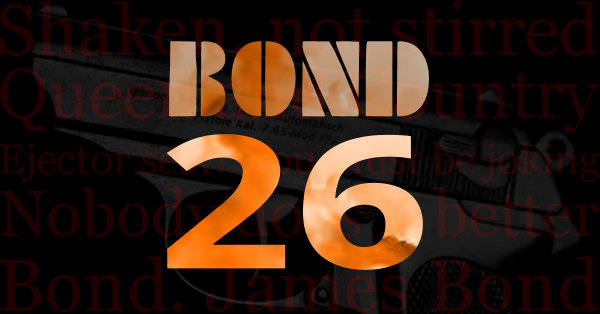In 2005, after deciding not to continue with Pierce Brosnan in the franchise, EON Productions took the bold step of reinventing the James Bond films. Instead of keeping with the current time-line of the Bond franchise, they sought (as had the time been recently been done to the Batman franchise) to revisit Bond’s earlier years—taking the audience to a time before he joined the 00 section when he was still rough around the edges and still to develop a taste for tuxedoes and vodka martinis.
The resultant feature, Casino Royale, went on to become the most successful Bond movie of its generation earning the movie countless critic reviews and award nominations. Many people commended the producers for their vision and courage. It however was not the first time that the movie franchise had needed a reinvention.
James Bond hasn’t always been the same. Sure the essence behind the character—a smooth, charming and ruthless agent—has remained constant in most of the movies but the storyline, timeline and personality linked with James Bond movies have been constantly reinvented over the years mostly with great success.
Bond’s first outing began in 1962 with the iconic movie Dr No. At the time the producers based their search on an actor who could accurately portray the tough character portrayed in Ian Fleming’s novels. The movies were equally built around the steely spy plot contained in the book with very little of the ambiguous humour that would later become common decades late. Although the first two Bond movies accurately portrayed the image of Bond, the movies were loved because of the violence portrayed in the movie. By 1964, James Bond movies had earned itself a reputation for being an adrenalin fest that thrilled moviegoers. However, when it came to the third movie, Terrence Young chose not to direct the feature leading to the consideration of Guy Hamilton as the next Bond director. It was at this point that the second reinvention occurred.
Guy Hamilton’s reinvention of the Bond movies was especially telling because it would become the standard used for many years thereafter. While keeping true to the violence of the former movies, he also focused on an area that was previously lacking in the first two instalments, namely humour. By emphasizing double entendres, witty dialogue and levelling the intelligence footing between Bond and his opponent, Guy Hamilton reinvented the Bond films to reflect a character who got by more on wit and intelligence than on brute strength.
For the next two Bond movies, the producers and directors stuck closely to Guy Hamilton’s script centring the movies on a careful balance of wit, beautiful women and unbelievable gadgets. However by 1969, with Sean Connery’s decision not to return in the next Bond movie, a decision was made to reinvent the popular formula. After choosing a movie script with toned down humour and abandoning the use of gadgets, the studio hired George Lazenby to fill the shoes of Bond. During the casting, emphasis was made on the physical attributes of George Lazenby and his ability to carry an action sequence because the producers intended to recreate what they believe would be a more faithful adaptation of Ian Fleming’s vision of Bond.
In many ways, they were successful with their reinvention. Many people consider George Lazenby’s rendition of Bond, On her Majesty’s Secret Service to be among the best movies in the franchise. However, the fans preference of Sean Connery as well as a poorly dubbed dialogue led to the poor box office reception of the movie. It was clear what needed to be done. After Connery returned for one final EON film in 1971 with Diamonds Are Forever James Bond had to be reinvented yet again.
The consequent reinvention was not so much a reinvention as a return to formula that had proven to be so successful. After persuading Sean Connery to return for his sixth outing as Bond in the movie Diamonds are Forever, the producers restored the use of gadgets and the prevalence of double entendre and humour. With continuous advancements in the film industry, the action sequences in Bond movies became bigger and bolder right on to the choice of Roger Moore.
By the time he was introduced, the studio had distanced the movies noticeably from the Bond in the Ian Fleming novels. However, a few changes still had to be done in order to realign the movie franchise with the current times. One of these was reducing the emphasis about the Cold war and villains spawned from that timeline. As a reflection of the ever widening audience, the producers of Bond began to venture into avant-garde areas such as battling a heroin magnate with operations in Harlem and struggling to protect the world’s energy in the movies Live and Let Die and The Man With The Golden Gun. In the former, the producers took advantage of the blaxploitation wave that was predominant at the time while The Man With The Golden Gun was easily identifiable with its reflection of the craze for Kung Fu movies that had gripped the world.
During his service as Bond, Roger Moore contributed to the reinvention of his seven Bond movies by choosing to adopt an even more amusing approach to the Bond character. He was not as physically imposing as Sean Connery or George Lazenby but he managed admirably to add a lot more charm, suave and intelligence to the general persona of Bond.
All of that changed in 1987 when Timothy Dalton was contracted to replace a visibly aging Roger Moore. Although the producers did not intentionally set out to reinvent the Bond films, Timothy Dalton’s stage acting style and less emphasis on humour in the script led to a noticeably different Bond movie. Timothy Dalton’s serious portrayal of Bond resulted in a darker edgier film that was loved by a few critics but mostly panned by viewers who disagreed with the realistic approach that the movie had adopted. Following the conclusion of Licence To Kill, the Bond films went on a six-year break during which legal issues were being resolved; it wasn’t until 1995 that Goldeneye was released.
A few changes were visible when Goldeneye was released. The first was the decision of using Judi Dench as M, the head of the MI6. Another was the conscious effort of the studio to do away with scripts or storylines that were still reminiscent of a cold war era that had long since died. With the break-up of the Soviet Union, the producers had to reinvent the villains to reflect the modern world in which Bond now lived in. This led to the introduction of Russian gangsters and ex KGB agents who had less than honourable intentions fuelled by greed and power as well as a greater emphasis on elaborate action sequence with very little focus on character development.
The last would however change when, following Pierce Brosnan’s final foray as James Bond, the studio chose Daniel Craig for the movie reboot Casino Royale.










March 6th, 2012 at 21:11
A few errors on an interesting history. OHMSS was realead in Approx. 1968 1969 Diamonds Are Forever Approx. 1970 or 71 nd Live anf Let Die i973. Licence to Kill followed The Living Daylights
March 7th, 2012 at 10:53
Thanks for the comments Robert. I’ve updated the article, hopefully it’s all correct now.